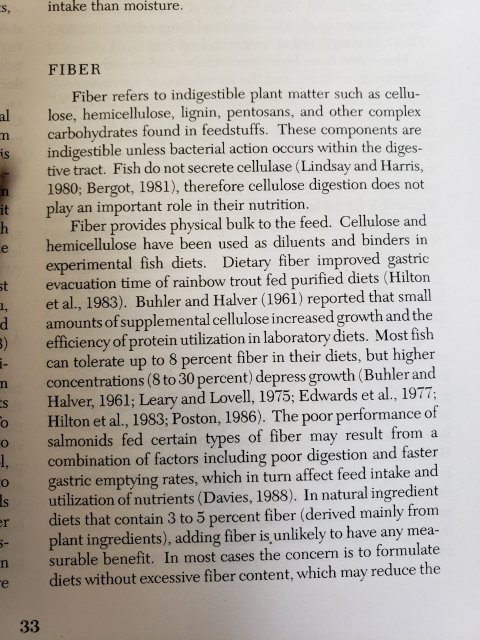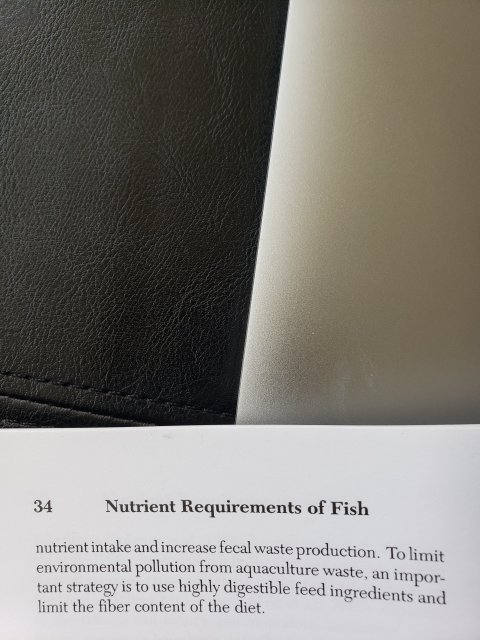I have been looking at minimum analysis of few different foods and found vast difference in fiber percentage
AAP PREMIUM ALL NATURAL: 19-21%
NLS thera A, algaemax: max 8%
NLS Ultrared: max 7%
Northfin most formulas: max 5%
Okiko platinum: min 3%
Why many foods list it as max like it's bad like ash?
Do you target any particular fiber percentage?
I couldn't find many resources on this topic. Nutrient requirements for fish recommends 3-5%, but wouldn't it depends on fish?
What's your take?
I was talking to a vet yesterday who was feeding mix of algemax, thera a and some hikari foods and really paid good attention to fiber in fish's diet.


AAP PREMIUM ALL NATURAL: 19-21%
NLS thera A, algaemax: max 8%
NLS Ultrared: max 7%
Northfin most formulas: max 5%
Okiko platinum: min 3%
Why many foods list it as max like it's bad like ash?
Do you target any particular fiber percentage?
I couldn't find many resources on this topic. Nutrient requirements for fish recommends 3-5%, but wouldn't it depends on fish?
What's your take?
I was talking to a vet yesterday who was feeding mix of algemax, thera a and some hikari foods and really paid good attention to fiber in fish's diet.




